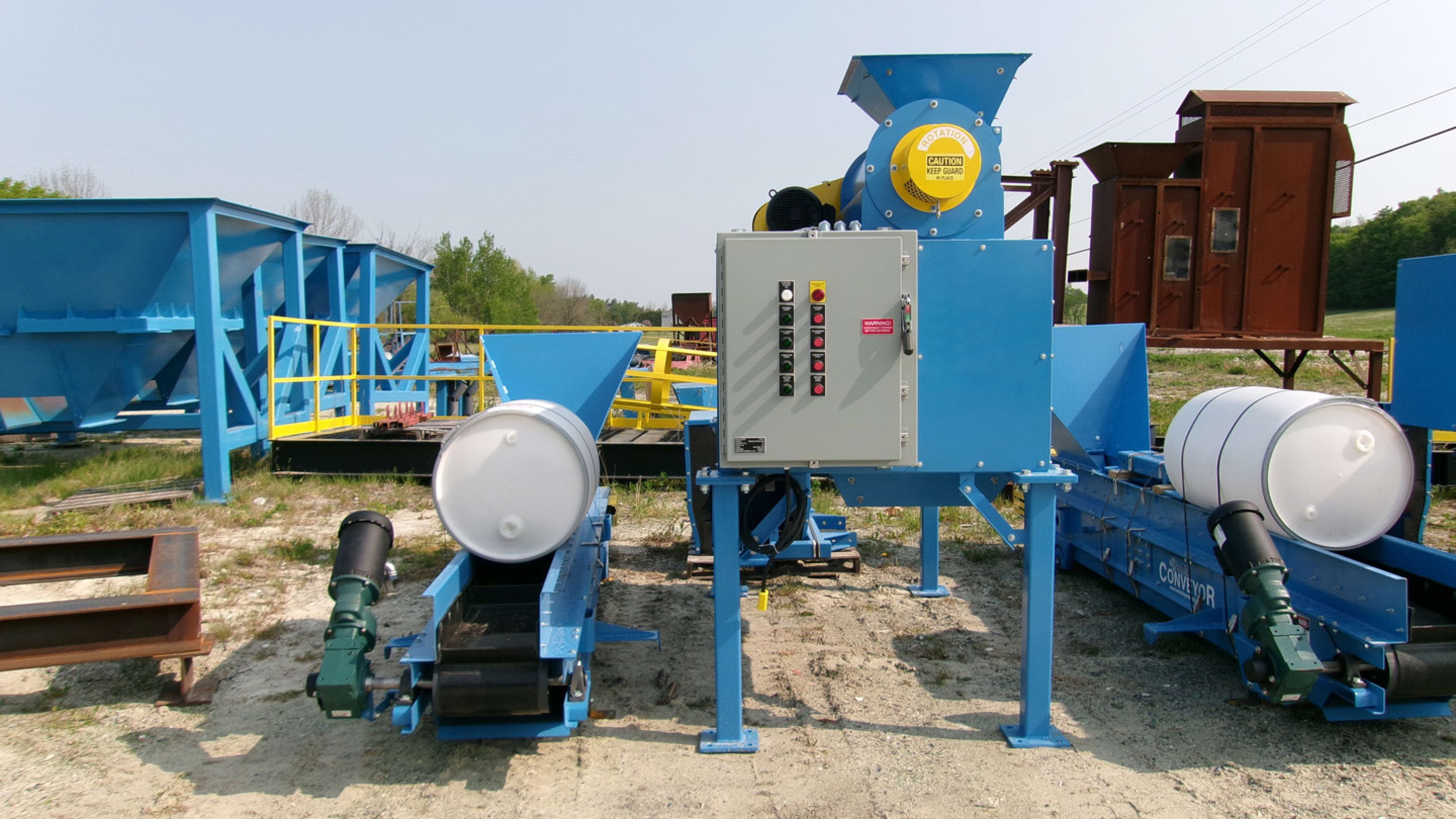Katie Aldworth grabs an empty wine bottle, puts it into a glass crusher, and then walks through her Maryland pottery studio with the end product: glass sand. After measuring out 275 grams, she pours the pulverized glass into a mold and bakes it in her kiln.
It sounds simple, but it’s taken her nearly three months to figure out how to turn used wine bottles into glass plates. When Aldworth pulls one from the kiln, a little light pops through. The color, she says, is “seaweed. It couldn’t be more perfect for Oyster Oyster.” That’s the DC restaurant which, last fall, challenged Aldworth with the task. She has made 40 glass sand plates so far at the studio she co-owns, Material Things, in Maryland.
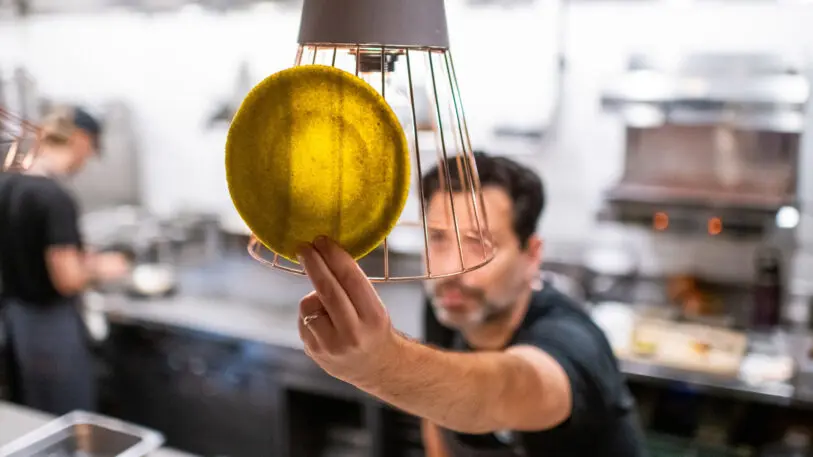
Five miles down the road at the Michelin-starred restaurant, the owner and executive chef uses Aldworth’s plate to serve up a vegan Reuben. Named the country’s top chef by the James Beard Foundation in 2023, Rob Rubba got the glass sand plate idea from an Instagram video posted by a London restaurant called Silo. (While Oyster Oyster’s plates are made entirely of glass sand, Silo’s use other ingredients as well.)
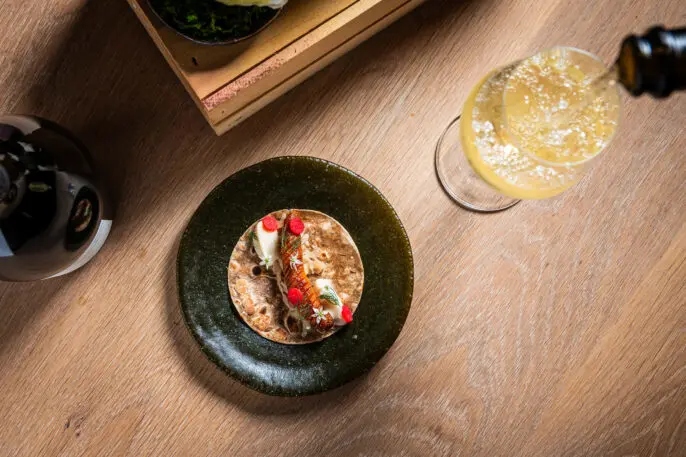
According to The Recycling Partnership, whole swaths of the U.S. don’t have glass bottle recycling, including regions of the Southeast and the Great Plains. A new report by the NGO states that the glass recycling rate for U.S. households is only 27%. The rest of the 8 million metric tons of glass Americans use each year goes into landfills.
“It can be devastating to watch the recycling truck pick up the 30 to 40 empties, knowing most of the wine bottles will end up in a landfill,” says Rubba. In response, Rubba and others have taken it upon themselves to come up with creative, often non-traditional solutions to glass recycling, and these new ideas are taking off.
It’s not that the U.S. doesn’t have the means to recycle glass. In Europe, 90% of glass is reused or repurposed. In the U.S., we have the same technology, we just don’t have the financial incentive. According to the Glass Manufacturing Industry Council, glass can be reused endlessly with no loss in quality. It can also be manufactured into new products — like Aldworth’s plates. Glass sand can be mixed with asphalt for roadway construction, used as filler for sandbags to mitigate flooding, and even put toward beach remediation. (While the makeup of glass sand and natural sand is different, the two are related and the differences aren’t always obvious to the naked eye.)
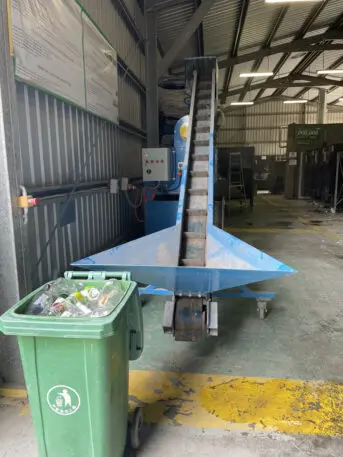
Glass crushing is a concept that Cynthia Andela has been promoting for more than three decades, since inventing the original crushing machine in the late 1980s. “Nobody else was doing it. Nobody,” Andela says of the machine that took five years to perfect so it would grind glass into soft sand with rounded edges. Years later, the mechanical engineer says her company, Andela Products, is seeing more competition in the marketplace. There’s CEMCO’s machine, recently acquired by Superior Industries, and Stedman Industries. But unlike these machines, Andela says hers don’t require lids and labels to be removed before crushing; nor do bottles need to be pre-crushed.
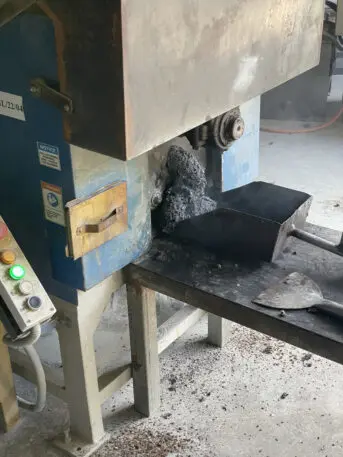
She compares her competitors’ machines to a cheese grater. “With pressure and a cheese grater you can turn hard cheese into grated cheese. When you do this with glass, the grate wears out quickly. You cannot grind up metal, plastics or paper that might be with the glass without contaminating the glass sand, or plugging up the grinding mill.”
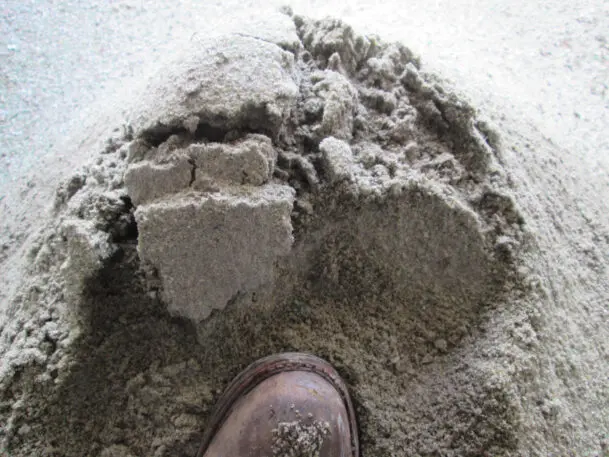
Her machines, she says, are more like blenders. “Everything goes into it and the action turns the glass into sand [and] separates it from the non-glass items, [which] stay in a larger form.” The mix is transferred into a tumbling screen (similar to your dryer barrel), and the fine sand falls through the small holes first, then the gravel sized pieces fall through a larger hole. The rest of the large debris falls out the end. This way, Andela’s machines, which can crush hundreds of glass bottles at a time, remove labels as well as corks and plastic or metal caps. The largest of her machines can crush 20 tons of glass in an hour. Her company, based in upstate New York, also makes single–bottle crushers like the one Aldworth uses.
Yet, her invention didn’t gain much traction in the U.S. despite years spent lobbying two disparate groups — the waste industry and what she calls, “recycling purists.”
The former “really has zero incentive to recycle the glass,” says Andela, because waste management companies are landfill companies first and hauling companies second; recycling is only a small percentage of what they do. When she pitched them her glass crushing machine, she says she was often called a crazy woman.
On the other end of the divide were the recycling purists who were only interested in recycling glass bottles into more glass bottles, not “downsizing” it into glass sand, she said.
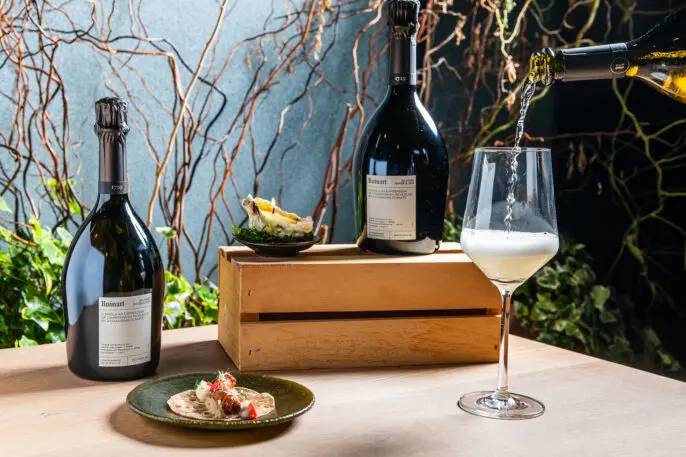
So, Andela built a book of business overseas, especially in island nations that lack space for landfills. In Timor-Leste, near Australia, and in St. Bart’s, in the French Caribbean, for example, glass sand is used in home and road construction projects, respectively. The United Nations uses Andela’s machines at peacekeeping camps around the world, which are notoriously plagued with waste issues. She has manufactured about 200 machines, all of them made in Richfield Spring, NY.
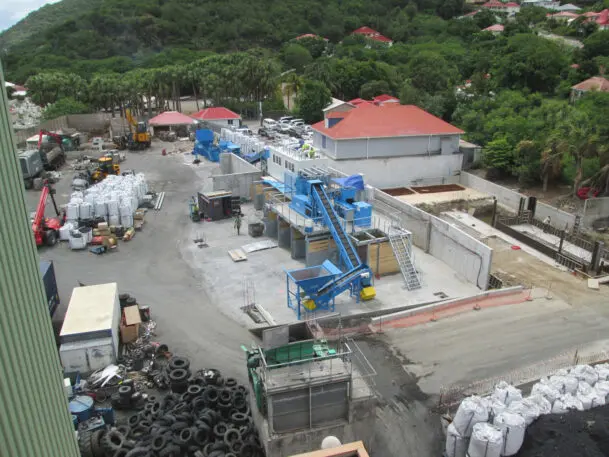
It was during Covid that Andela says she noticed a shift in mindset in the U.S. and saw more interest in turning glass bottles into sand. She hypothesizes that as people felt the strain of supply chain issues, some took deep dives into American manufacturing. And, stuck at home, people also became more aware of how much trash they were producing; more deep dives and they learned that the glass bottles they’d been earmarking for recycling centers had for years been landing in landfills.
That mindset shift meant more orders for Andela. The company now has a six- to nine-month backlog, with more orders coming in every week, including from high profile companies like Disney. Despite the increased interest, she says, “there is a lot of glass that can still be mined from the urban waste stream.”
Like in New Orleans where, over a bottle of wine, Franziska Trautmann and Max Steitz launched Glass Half Full (GHF) during their senior year at Tulane University in 2020. Dismayed that the city doesn’t recycle glass at all, they bought a single bottle crusher, similar to the one Aldworth uses at her pottery studio. Nearly four years later, one of Andela’s large machines now crushes 100,000 pounds of glass a month at their New Orleans facility where they have a free bottle drop. GHF’s medium-fine glass sand is being used for coastal restoration and fills disaster relief sandbags; they also produce more gravelly glass sand for landscaping and flooring.
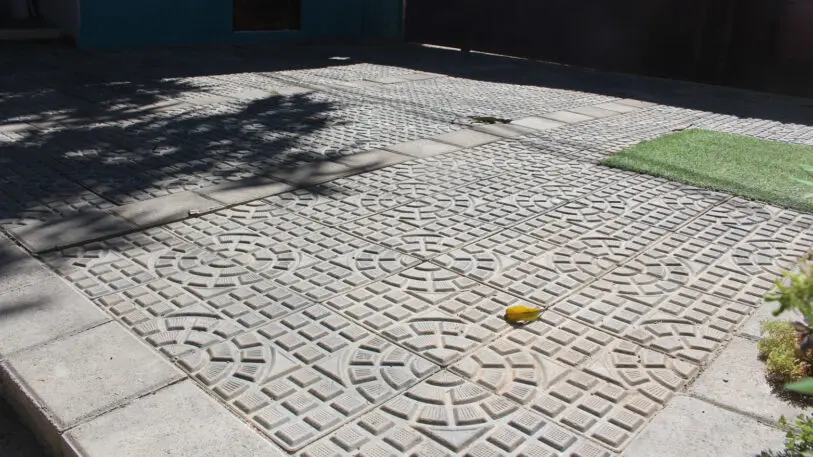
There’s other work being done all over the country with glass sand. Researchers in New York State have developed a gardening compost made from a mixture of food waste and glass sand and are seeing strong root growth in tomato plants. When water interacts with glass sand, the latter releases silica — found naturally in glass; while not a nutrient, research has shown that silica supports healthy plant growth. “A thirsty plant or person . . . get what they need faster from a glass of water than from a bowl of ice,” Andela explains.
In Hoboken, NJ, the under-construction Northwest Resiliency Park is using a glass sand mulch combination and seeing better filtration and moisture retention than from traditional mulch. In Blount County, TN, instead of salting roads with brine during a snowstorm, the city is using glass sand. (When the glass sand is ground to less than 4mm with rounded edges, it won’t affect tires, says Andela). And, in Puerto Rico, concrete blocks and pavers are being made out of glass sand.
The national trade association Glass Packaging Institute (GPI) supports these local projects; but GPI president Scott DeFife calls them an “option,” not a “solution.” The solution, he says, is getting glass bottles back so they can be recycled and reused in their original form — as glass bottles, something consumers need to demand of their local governments.
According to the Recycling Partnership report, only 548 communities in the U.S. collect glass bottles separately from other recycled items. (The Recycling Partnership says 7,684 cities or counties accept glass; a total of 9,231 communities in the U.S. have recycling programs.) That’s part of the problem, says DeFife. “Trying to get good quality recycled glass out of the co-mingled stream I liken to taking a carton of eggs, crushing it inside the carton and then trying to take the shells and the fiber out so they can make an omelet.”
Andela, meanwhile, says she’s “very pleased” to see the uptick in glass sand manufacturing. Glass has been her whole life, after collecting her first glass bottle at the age of 11 and redeeming it for a nickel. “The first money I ever made was from glass and the last money I’ll ever earn is from glass,” she says, laughing.
Recognize your brand’s excellence by applying to this year’s Brands That Matter Awards before the early-rate deadline, May 3.
